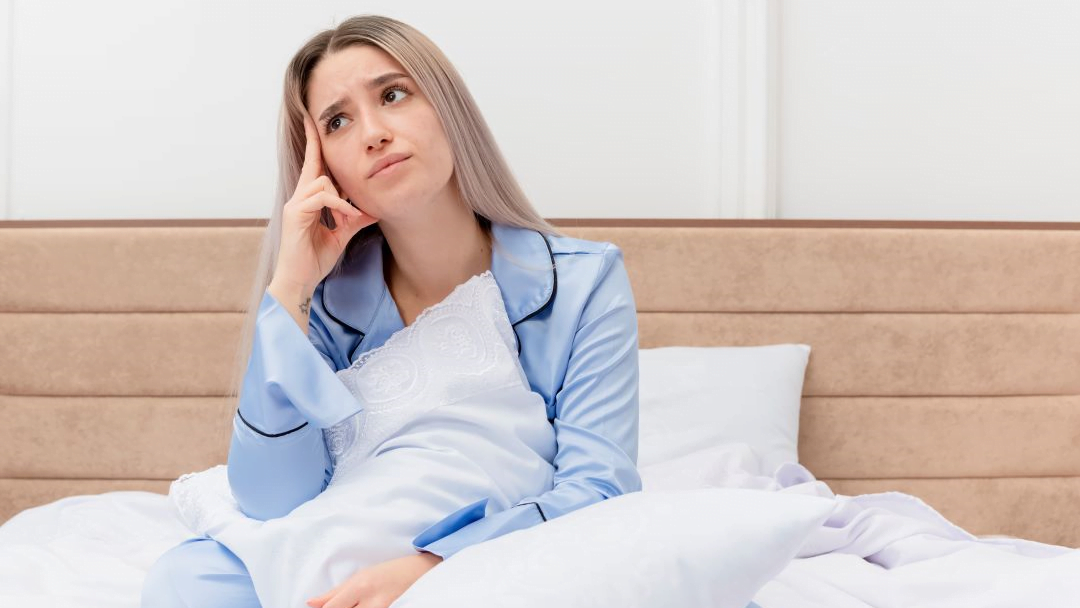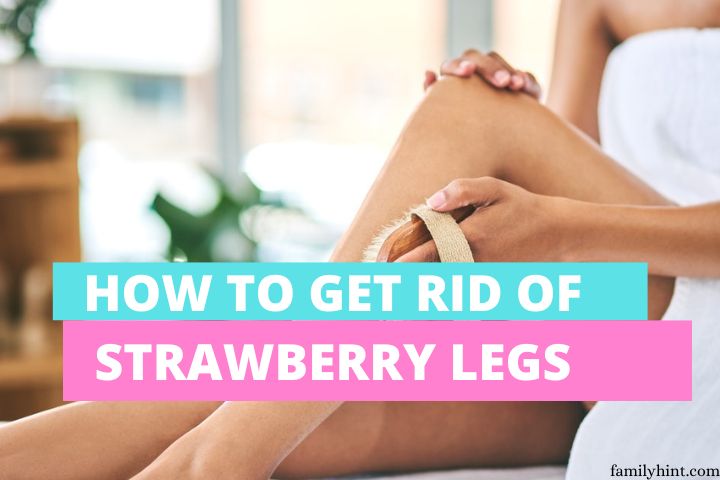
Retinol is a popular ingredient in many skincare products, known for its ability to treat acne and reduce the signs of aging. However, as with any potent skincare ingredient, there are factors to consider, including potential side effects. Among the common concerns retinol users raises is whether it has the propensity to leave unsightly stains on sheets and pillowcases. In this article, we will thoroughly explore the question that puzzled many individuals: Does Retinol stain sheets? We will also provide helpful tips for preventing and removing these stubborn stains.
What Is Retinol: A Closer Look At This Skincare Ingredient
Retinol is a vitamin A derivative, which is found in many foods, including carrots and milk. It’s also available as a prescription cream or gel. Retinol increases cell turnover and cell renewal, which causes the skin to look younger.
In addition, retinol may help reduce fine lines and wrinkles by exfoliating dead skin cells away from the surface of your skin. While retinol possesses many benefits, it can cause staining if they get too much on sheets or if you leave them for too long on sheets.
Does Retinol Stain Sheets? If So, How?
The potential of retinol staining your sheets depends on several factors, including the concentration of retinol in the product, the fabric of your sheets, and how you care for them. Typically, the staining occurs when retinol interacts with other substances, such as oils, dirt, or products like benzoyl peroxide. These interactions can cause discoloration and lead to visible stains on your sheets.
In addition, if you’re using a prescription retinoid like tretinoin, the chances of staining your sheets are higher than over-the-counter retinol products. Prescription treatments tend to be more potent and may have a higher likelihood of causing stains. Higher retinol concentrations may increase the chances of staining, so it is essential to be cautious using a prescription-strength retinoid.
It’s important to note that retinol stains are more likely to occur on white sheets. Light-colored and patterned sheets may hide the stains better but can still become discolored.
Proper Washing and Maintenance To Prevent Retinol Stains

To prevent retinol stains, it’s important to wash your sheets regularly and follow proper care instructions. Here are some tips:
- Use a gentle detergent: Harsh detergents can weaken the fibers of your sheets and make them more prone to stains. Choose a gentle detergent specifically formulated for delicate fabrics.
- Wash your sheets separately: Washing your sheets separately from other items can prevent any potential transfer of stains.
- Pre-treat stains before washing: If you notice any stains on your sheets, pre-treat them before washing. Use a stain remover or detergent mixture and water to dab the stained area.
- Follow manufacturer’s instructions: Always check the care label on your sheets for specific washing instructions. This will ensure you use the correct water temperature and cycle settings.
- Avoid fabric softeners and dryer sheets: Fabric softeners and dryer sheets can leave a residue on your sheets, making them more prone to staining. Instead, opt for a gentle fabric conditioner if desired.
How to Get Retinol Out of Clothes
To remove retinol from clothes, you must use a different product than regular detergent. You can use a commercial stain remover, as this product is designed to remove oil-based stains. It works well in removing the retinol from your clothing and any other stains on your clothing.
You can also use heavy-duty laundry detergent to remove the retinol from your clothes. This type of detergent has enzymes that can break down oil-based dirt stains on your clothing. Heavy-duty laundry detergents usually have bleach, which can help clean out any remaining traces of this chemical compound.
Other Effective Methods To Remove Retinol Stains On Fabric
If you do happen to get retinol stains on your sheets, there are several methods you can try to remove them:
- Using hydrogen peroxide: Hydrogen peroxide can be effective in removing stubborn stains. Apply a small amount to the stained area and let it sit for a few minutes before rinsing it with cold water.
- Spot cleaning with mild detergent: Depending on the severity of the stain, you can use the mildest detergent if it is thin enough and easy to be removed. Gently dab the stained area with a clean cloth. Avoid rubbing vigorously, as this can spread the stain further.
- Alternative methods to remove retinol stains without bleach: If you prefer to avoid using bleach, you can use natural stain removers like lemon juice, baking soda, or vinegar. These ingredients can help break down the stains without causing damage to your sheets.
Can Bleach Be Used To Remove Retinol Stains?
Using Bleach To Get Rid of Retinol Stains on Sheets
Bleach is commonly used as a stain remover, but it’s important to exercise caution when using it on retinol stains. Bleach can be harsh on fabrics and may cause discoloration or damage if misused. If you decide to use bleach, follow the instructions on the product label.
Dilute the bleach with water according to the recommended ratio and apply it to the stained area. Allow it to sit for a few minutes, then rinse thoroughly with water. Remember to wear gloves and work in a well-ventilated area when using bleach.
Precautions When Using Bleach on Retinol Stains
Before using bleach on your sheets, it’s important to check their care instructions. Certain fabrics, such as linen, may not be bleach-safe. Additionally, repeated use of bleach can weaken the fabric over time, so it’s best to limit its use to stubborn stains. If you’re unsure about using bleach or dealing with delicate fabrics, consult a professional cleaner or follow alternative stain removal methods.
Alternative Methods To Remove Retinol Stains Without Bleach
If you prefer to avoid using bleach, alternative methods exist to remove retinol stains from your sheets. These methods are often gentler on fabrics and can still effectively remove stains:
- Using lemon juice: The natural acidity of lemon juice can help break down retinol stains. Squeeze fresh lemon juice onto the stained area, let it sit for a few minutes, then rinse with cold water.
- Baking soda paste: Mix baking soda with water to create a paste. Apply the paste to the stained area, gently scrub, and rinse thoroughly.
- Vinegar solution: Create a solution of equal parts vinegar and water. Apply it to the stained area, let it sit for a few minutes, then rinse with cold water.
How to Care for Sheets When Using Retinol Products?
Minimizing the Risk of Retinol Stains on Sheets
While it’s difficult to eliminate the risk of retinol stains on sheets, you can take steps to minimize this risk. By following these precautions, you can keep your sheets looking clean and stain-free:
- Apply retinol products at least 30 minutes before bedtime: This allows enough time to absorb into your skin, reducing the potential for transfer onto your sheets.
- Wear a sleep mask: Investing in a sleep mask can protect your sheets from any potential retinol transfer while you sleep.
- Choose the right fabric for retinol users: Some fabrics are more resistant to staining. Opt for sheets made of natural fibers like cotton or bamboo, which are easier to clean and less likely to retain stains.
Tips To Prevent Retinol Stains on Your Sheets and Pillowcases

Here are some tips to prevent retinol stains on your sheets and even pillowcases:
- Use white or light-colored sheets: Light-colored sheets are less likely to show stains, so opting for white or light colors can help minimize the visibility of any potential stains.
- Wash your face and hands before bed: By washing your face and hands before bed, you can reduce the amount of retinol residue that may transfer onto your sheets.
- Wait before getting into bed: Give your retinol products enough time to fully absorb into your skin before getting into bed. This can help minimize the transfer of retinol onto your sheets.
- Use a towel or pillowcase as a barrier: Placing a clean towel or pillowcase over your pillow can provide an additional barrier between your retinol-treated skin and your sheets.
Frequently Asked Questions
Q: Does Retinol Stain Your Sheet?
A: Retinol is a potent skincare ingredient known to provide various benefits for the skin, including anti-aging effects. However, it is also true that retinol can sometimes cause staining on fabrics, including sheets. Retinol has a yellowish tint and can transfer onto fabrics through direct contact. To avoid staining, it is recommended to use white sheets or pillowcases when using retinol or any other skincare products that may potentially stain your clothes.
Q: What are the potential side effects of using benzoyl peroxide for acne treatment?
A: Benzoyl peroxide is a commonly used ingredient in acne products due to its antibacterial properties. However, it is important to note that it can have some side effects. Common side effects of benzoyl peroxide include dryness, redness, peeling, and irritation. In rare cases, it may also cause allergic reactions. If you experience any severe or persistent side effects, it is best to consult a dermatologist.
Q: Should I use white towels and pillowcases to avoid bleach stains and discoloration?
A: White towels and pillowcases are a good precaution to avoid bleach stains and discoloration caused by skincare products like retinol or benzoyl peroxide. White fabrics are less likely to show visible stains or discoloration than colored fabrics. Additionally, white fabrics can be easily bleached if already stained. To keep your sheets and towels looking pristine, it is advisable to separate them from other colored laundry.
Q: What are the benefits of using vitamin C serum for the skin?
A: Vitamin C serum is a popular skincare product known for its antioxidant properties. It can help neutralize free radicals, boost collagen production, improve skin elasticity, and brighten the complexion. Regular use of a vitamin C serum can help reduce the appearance of fine lines and wrinkles, fade hyperpigmentation, and promote more youthful-looking skin.
Q: What precautions should I take when using stronger skincare formulas like tretinoin?
A: When using stronger skincare formulas like tretinoin, it is important to take certain precautions to minimize potential side effects. These precautions include gradually introducing the product into your skincare routine, starting with a lower concentration and gradually increasing it over time. Sunscreen during the day is crucial, as tretinoin can increase skin sensitivity to the sun. Additionally, it is advisable to moisturize your skin regularly to prevent dryness and irritation.
Q: Does benzoyl peroxide bleach towels and fabrics?
A: Yes, benzoyl peroxide has the potential to bleach towels and fabrics. It is an effective acne treatment because it kills acne-causing bacteria. However, it can also bleach fabrics if it comes into direct contact with them. To prevent bleaching, it is best to use white towels and avoid letting benzoyl peroxide-impregnated skin or hair come into contact with colored fabrics.
Q: How should I cleanse my skin properly when using retinol and other potent treatments?
A: When using retinol or other potent skincare treatments, it is important to cleanse your skin properly to minimize potential irritation. Use a gentle cleanser to remove dirt, oil, or makeup from your face. Avoid harsh scrubs or exfoliants, as they can further irritate the skin. After cleansing, pat your skin dry with a clean towel and wait a few minutes before applying the retinol or other treatments. This will allow your skin to dry completely and reduce the likelihood of irritation.
Conclusion
In conclusion, retinol itself does not intrinsically predispose to staining sheets or pillowcases. The potential for staining is contingent upon the formulation of retinol products and the manner of application.
By embracing a prudent approach and employing proper measures for absorption, individuals can confidently use retinol in their skincare routine without compromising the pristine condition of their sheets or linen.
As with any skincare product, consulting with a dermatologist or skincare expert is advisable to tailor a regimen to one’s unique skin type and specific concerns.
For more valuable content like this, join our community at the Family Hint today!




